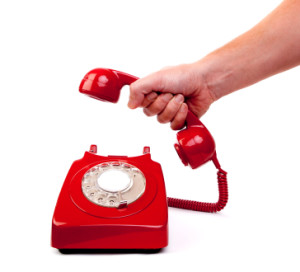5 Reasons to Hang Up on Traditional Phone Lines for your Business
 Consumers the world over are dumping traditional phone lines in favor of mobile devices and VoIP. In fact, 10 years ago 9 out of 10 American homes had a landline phone. Today it’s down to around only 50%, according to the Centers of Disease Control and Prevention. (They track phone ownership as part of their National Health Interview Survey.) While it is admittedly easier to cut the cord at home, there are compelling reasons to do it for your business as well.
Consumers the world over are dumping traditional phone lines in favor of mobile devices and VoIP. In fact, 10 years ago 9 out of 10 American homes had a landline phone. Today it’s down to around only 50%, according to the Centers of Disease Control and Prevention. (They track phone ownership as part of their National Health Interview Survey.) While it is admittedly easier to cut the cord at home, there are compelling reasons to do it for your business as well.
1. PRI Lines are Expensive and Costs will Continue to Rise
Traditional phone contracts with per-minute long distance calling are expensive and the evidence indicates prices will continue to rise as carriers try to maintain their revenue from a shrinking pool of customers. British Telecom, for example, recently raised rates by almost 7%.
2. PRI Lines Don’t offer Flexibility
Traditional phone lines are sold in groups of 23, meaning that many businesses are paying for more capacity than they need. In addition, long-term carrier contracts lock businesses into arrangements that may no longer fit their needs.
3. Traditional Landlines Don’t Support Business Continuity
When a natural or manmade disaster prevents your employees from getting to the office or if you experience a loss of power, do phone calls go unanswered? For some business owners, this is ok, for others, this lost opportunity and potential customer dissatisfaction is unacceptable.
4. SIP Trunking is a Viable Alternative
Before you can dump your landline, you need another option. SIP trunking offers a reliable, inexpensive, flexible and easy to deploy alternative for businesses that are ready to take advantage of today’s technology.
5. Why maintain 2 networks?
With SIP, voice calls travel the same network you use to access the internet. This allows you to consolidate your voice and data traffic, eliminating the need for a second network that handles nothing but voice.
If you haven’t given much thought to saying goodbye to landlines for your business, now is the time. The arguments for a SIP solution are strong. It’s no wonder that the traditional approach is rapidly losing ground.


